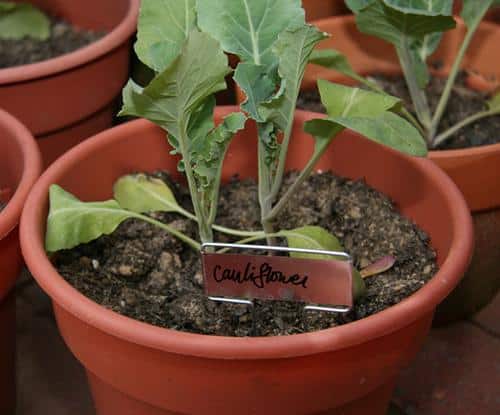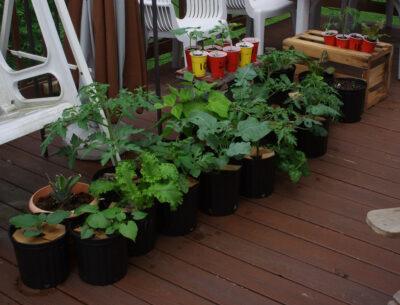We all know that growing vegetables in containers is a great way to provide you and your family with fresh fruit and vegetables all year long – and it is especially useful for those who don’t have the space or who might otherwise have difficulty managing a full-size garden.
If you’ve decided to try your hand at container gardening, you’ll be happy to know that there are many tricks and tactics you can use to simplify the process and get better results.
Here are a few ideas for your next container garden:
1. Use a soilless mix.
Many people are surprised to learn that a bag of potting soil actually does not contain any field soil. Instead, it is a mix of organic and inorganic matter that is lighter than actual soil, thus making it easier for plants to grow inside a container.
Seamazing: The Low-Cost Way To Re-mineralize Your Soil
There are many commercial potting soils, but it is also possible to make your own. For most container garden plants, the ideal mix is comprised of peat moss (about 40 percent), pine bark (20 percent), sand (20 percent) and vermiculite (20 percent).
2. Keep plants sheltered from wind and excessive rain.
Plants grown in containers are not typically the strongest of plants, and you may need to baby them a bit more than ones planted directly in the ground. Find a place for your containers that is sheltered from strong wind.
And if you get a summer thunderstorm or downpour, you’ll most likely want to pull them inside a shelter to avoid damage. And while we’re on the topic of downpours, make sure your containers aren’t left sitting in a puddle of water, either.
3. Place herbs around your vegetables.
Most herbs have strong scents and flavors that are wonderful for keeping bugs away. Use this to your advantage and surround more vulnerable plants such as lettuce, peppers, etc., with herbs.
4. Have proper drainage.
One of the trickier aspects of container gardening is to make sure that that roots are not sitting in water. Make sure that the containers you use have proper drainage holes, or if not, provide another means, such as adding pebbles to the bottom of the container or lining it with sheet moss.
5. Plant quick-growing vegetables.
Any vegetable that you can grow in the ground also can be grown in containers. But it’s usually best to steer clear of anything that has a long maturation period – such as corn.
6. Practice succession planting.
Many of the principles that apply to a regular garden also apply to container gardens. It’s still a good idea to plan your vegetables in succession.
Looking For Non-GMO Seeds? Look No Further!
For example, quick-growing crops, such as lettuce, radishes or snow peas, should be planted a little at a time so you don’t end up with more than your family can reasonably eat.
7. Make use of hanging baskets.
Container gardens are a favorite with many gardeners because of their compact nature. But remember that you can make them even more space-efficient by including hanging baskets. Plants like tomatoes and strawberries make good choices for hanging baskets.
8. Stake at the start.
If you are planting something that is going to need a little extra support, be sure to stake it at the beginning. Trying to stake it later could end up damaging the roots.
9. Give plants plenty of water.
Container plants can dry out quickly during dry, hot summers. While most of the time daily watering is sufficient, consider watering twice a day when the temperatures climb higher.
10. Pick off dead leaves.
Removing dead and dying leaves from your plants doesn’t only make them look better, but it also helps protect them from bugs.
Remember these useful strategies and you will be well on your way to having a beautiful and thriving container garden.
What advice would you add? Share it in the section below:
Every Year, Gardeners Make This Stupid Mistake — But You Don’t Have To. Read More Here.
 Off The Grid News Better Ideas For Off The Grid Living
Off The Grid News Better Ideas For Off The Grid Living





